
# 1884 - 1981 18c Wildlife of America: Brown Bear
1981 18¢ Brown Bear
Wildlife of America
City: Boise, Idaho
Quantity: Unknown
Effigy Mounds National Monument
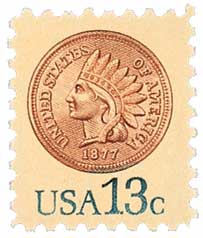
Effigy Mounds National Monument in Iowa was established on October 25, 1949. The monument protects and interprets the history behind about 200 mounds built by Native Americans centuries ago.
Native Americans began settling in the “Driftless Area” of the Midwestern US during the late-woodland period. There were several tribes of mound builders in the United States, each with a unique culture and set of traditions. Some built simple, cone-shaped mounds used only for the burial of their dead. Others built effigies shaped like different animals or spirits. The purpose of the effigy mounds is harder to determine.
Archaeologists have several different theories on the significance of these structures. Some believe the effigies were built mainly for spiritual or religious reasons. This theory acknowledges the mounds’ use as burial sites, but only as a secondary purpose. Other archaeologists are more interested in the reasons behind the different animal shapes of each effigy. Most think the animal was meant to represent the tribe or family of the person, or people, buried in the mound. A few archaeologists wonder if the different animals symbolized a spirit that led the deceased to the next world.
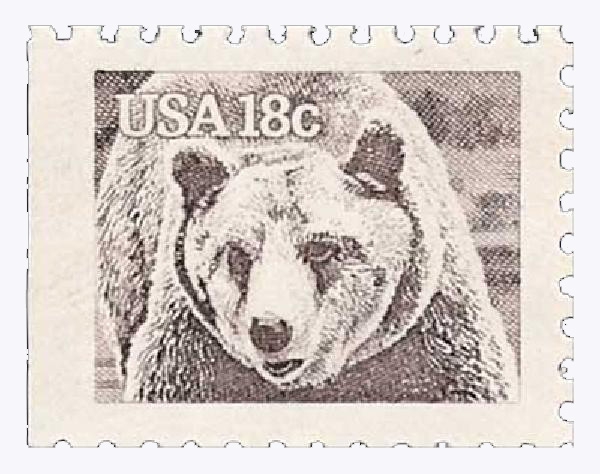
The Effigy Mounds National Monument is home to approximately 200 mounds, 31 of which are effigies. Most effigy mounds within the monument are bird or bear designs. The largest effigy mound is called Great Bear Mound and is nearly 138 feet long and about three feet tall. The idea of preserving these pieces of history is a fairly new one.
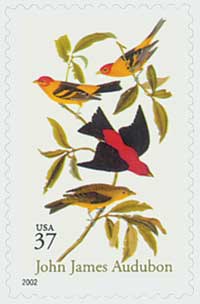
Over the years, many mounds that could have been part of the monument were destroyed by farming or excavation. Between 1950 and 1960, archaeologists wanted to study the contents of the mounds, but their techniques weren’t as delicate as the ones of today. These studies led to the disturbance and destruction of many mounds. Regardless of whether a mound is completely or only partially excavated, the process greatly reduces or destroys the structure’s value as a historic object. Archaeologists eventually began to question their actions, and most of the mounds were saved.
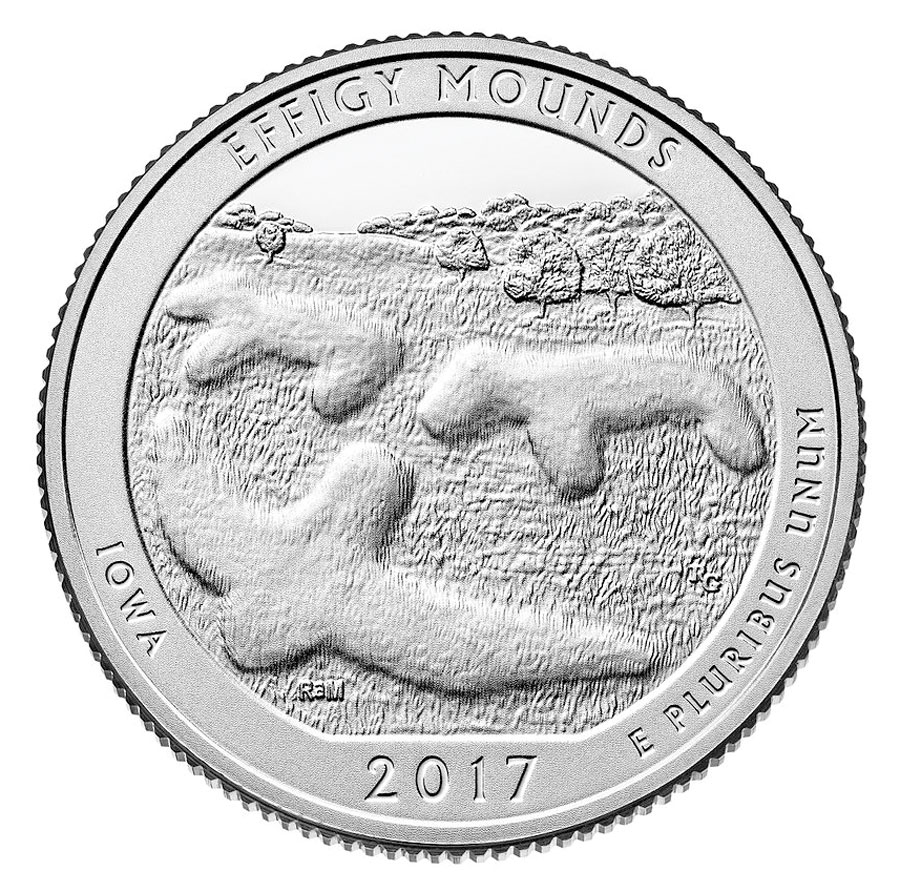
The Effigy Mounds National Monument was established on October 25, 1949. The proclamation, signed by President Harry Truman, granted the monument its original plot of land. In the next few decades, there were several expansions of the original property. Eventually, the monument grew to an impressive 2,526 acres.
As an added protective measure, in 1959, the National Park Service (NPS) issued a policy forbidding any more destruction of the mounds. They still allowed archaeologists to study them, but only using methods that did not disturb their overall structure. By 1970, this policy led to the focus of the park shifting to preserving the mounds and exploring the history of their builders.
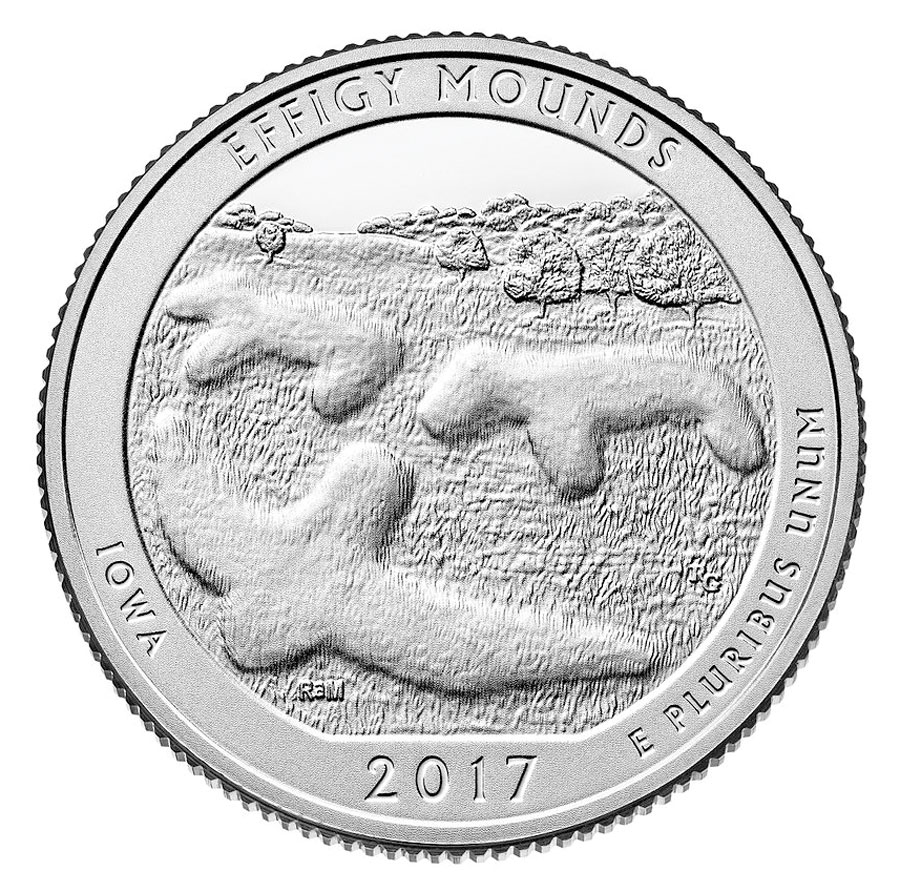
A decade later, NPS began reaching out to local Native American groups with connections to the original mound builders. The park service hoped to uncover why the mounds were built and what their significance was. The passing of the Native American Graves Protection and Repatriation Act helped this cause tremendously. This act required any federal agencies or museums with Native American remains to reach out to their living descendants or related peoples. The conversations inspired by this law helped piece together the history of the mound builders and the significance of their creations.
1981 18¢ Brown Bear
Wildlife of America
City: Boise, Idaho
Quantity: Unknown
Effigy Mounds National Monument

Effigy Mounds National Monument in Iowa was established on October 25, 1949. The monument protects and interprets the history behind about 200 mounds built by Native Americans centuries ago.
Native Americans began settling in the “Driftless Area” of the Midwestern US during the late-woodland period. There were several tribes of mound builders in the United States, each with a unique culture and set of traditions. Some built simple, cone-shaped mounds used only for the burial of their dead. Others built effigies shaped like different animals or spirits. The purpose of the effigy mounds is harder to determine.
Archaeologists have several different theories on the significance of these structures. Some believe the effigies were built mainly for spiritual or religious reasons. This theory acknowledges the mounds’ use as burial sites, but only as a secondary purpose. Other archaeologists are more interested in the reasons behind the different animal shapes of each effigy. Most think the animal was meant to represent the tribe or family of the person, or people, buried in the mound. A few archaeologists wonder if the different animals symbolized a spirit that led the deceased to the next world.

The Effigy Mounds National Monument is home to approximately 200 mounds, 31 of which are effigies. Most effigy mounds within the monument are bird or bear designs. The largest effigy mound is called Great Bear Mound and is nearly 138 feet long and about three feet tall. The idea of preserving these pieces of history is a fairly new one.

Over the years, many mounds that could have been part of the monument were destroyed by farming or excavation. Between 1950 and 1960, archaeologists wanted to study the contents of the mounds, but their techniques weren’t as delicate as the ones of today. These studies led to the disturbance and destruction of many mounds. Regardless of whether a mound is completely or only partially excavated, the process greatly reduces or destroys the structure’s value as a historic object. Archaeologists eventually began to question their actions, and most of the mounds were saved.

The Effigy Mounds National Monument was established on October 25, 1949. The proclamation, signed by President Harry Truman, granted the monument its original plot of land. In the next few decades, there were several expansions of the original property. Eventually, the monument grew to an impressive 2,526 acres.
As an added protective measure, in 1959, the National Park Service (NPS) issued a policy forbidding any more destruction of the mounds. They still allowed archaeologists to study them, but only using methods that did not disturb their overall structure. By 1970, this policy led to the focus of the park shifting to preserving the mounds and exploring the history of their builders.

A decade later, NPS began reaching out to local Native American groups with connections to the original mound builders. The park service hoped to uncover why the mounds were built and what their significance was. The passing of the Native American Graves Protection and Repatriation Act helped this cause tremendously. This act required any federal agencies or museums with Native American remains to reach out to their living descendants or related peoples. The conversations inspired by this law helped piece together the history of the mound builders and the significance of their creations.
















